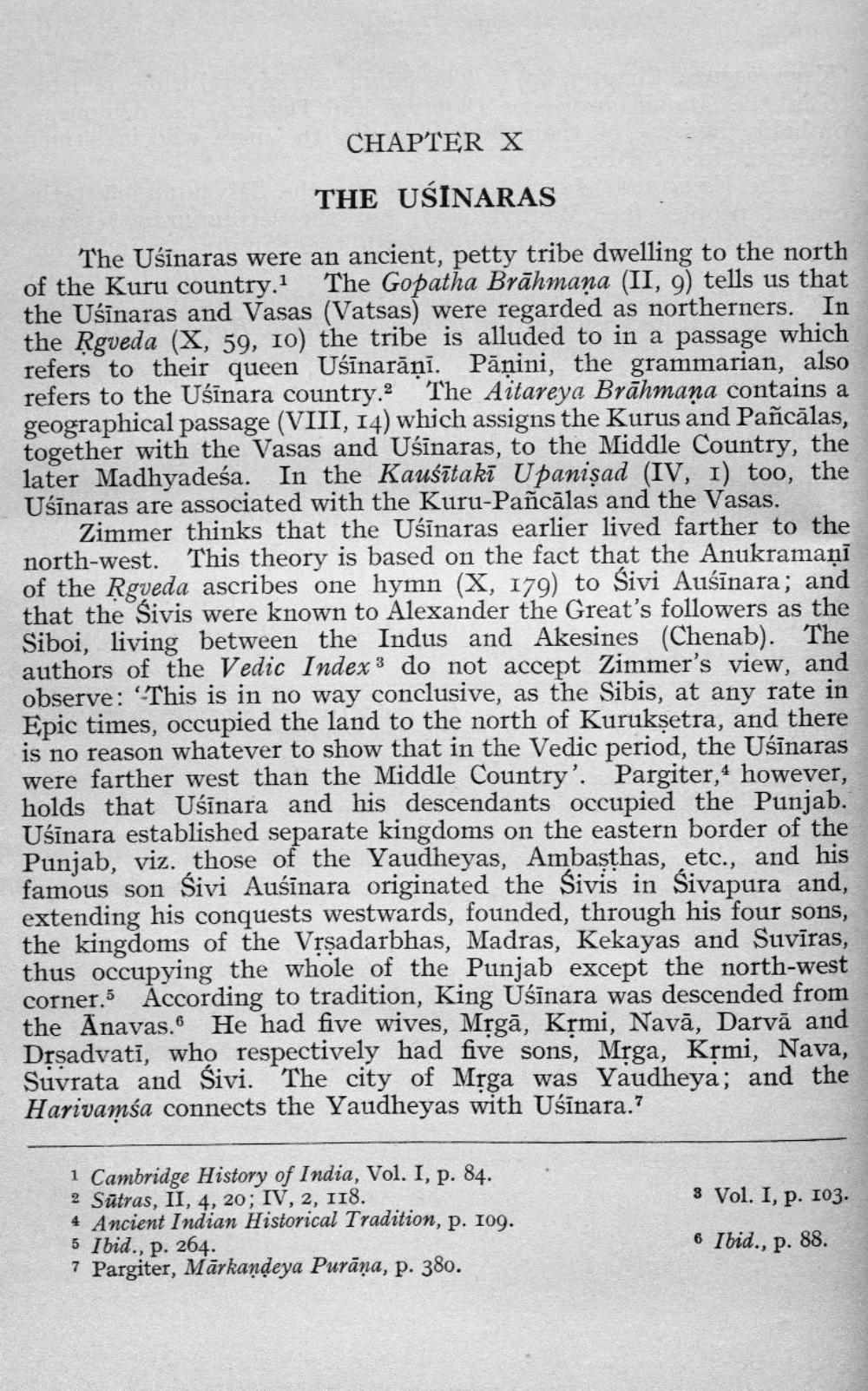________________
CHAPTER X
THE USINARAS
The Uśīnaras were an ancient, petty tribe dwelling to the north of the Kuru country. The Gopatha Brāhmana (II, 9) tells us that the Usinaras and Vasas (Vatsas) were regarded as northerners. In the Rgveda (X, 59, 10) the tribe is alluded to in a passage which refers to their queen Usīnarāni. Pāṇini, the grammarian, also refers to the Uśīnara country. The Aitareya Brāhmana contains a geographical passage (VIII, 14) which assigns the Kurus and Pañcālas, together with the Vasas and Usinaras, to the Middle Country, the later Madhyadeśa. In the Kauśītaki Upanişad (IV, I) too, the Uśīnaras are associated with the Kuru-Pañcālas and the Vasas.
Zimmer thinks that the Uśīnaras earlier lived farther to the north-west. This theory is based on the fact that the Anukramaņi of the Rgveda ascribes one hymn (X, 179) to Sivi Auśīnara; and that the Sivis were known to Alexander the Great's followers as the Siboi, living between the Indus and Akesines (Chenab). The authors of the Vedic Index3 do not accept Zimmer's view, and observe: "This is in no way conclusive, as the Sibis, at any rate in Epic times, occupied the land to the north of Kuruksetra, and there is no reason whatever to show that in the Vedic period, the Ušīnaras were farther west than the Middle Country'. Pargiter,4 however, holds that Uśīnara and his descendants occupied the Punjab. Uśīnara established separate kingdoms on the eastern border of the Punjab, viz. those of the Yaudheyas, Ambasthas, etc., and his famous son Śivi Auśīnara originated the Sivis in Sivapura and, extending his conquests westwards, founded, through his four sons, the kingdoms of the Vrşadarbhas, Madras, Kekayas and Suvīras, thus occupying the whole of the Punjab except the north-west corner. According to tradition, King Uśīnara was descended from the Anavas. He had five wives, Mrgā, Kệmi, Navā, Darvă and Drsadvatī, who respectively had five sons, Mrga, Krmi, Nava, Suvrata and Sivi. The city of Mrga was Yaudheya; and the Harivamśa connects the Yaudheyas with Usinara.?
i Cambridge History of India, Vol. I, p. 84. 2 Sūtras, II, 4, 20; IV, 2, 118. 4 Ancient Indian Historical Tradition, p. 109. 5 Ibid., p. 264. 7 Pargiter, Mārkandeya Purāņa, p. 380.
3 Vol. I, p. 103 6 Ibid., p. 88.




